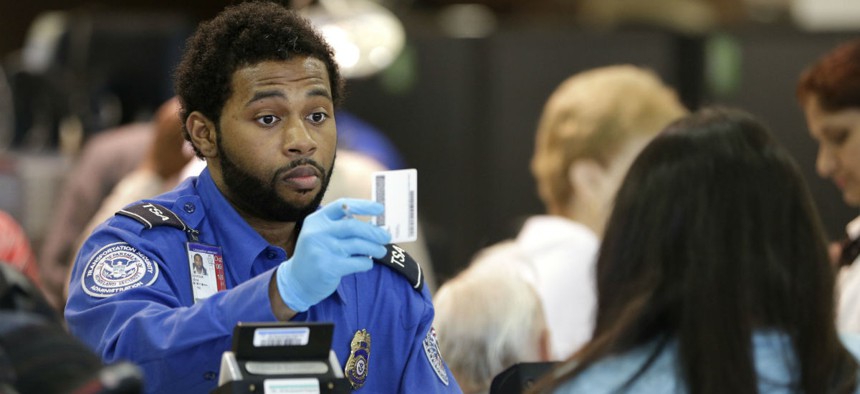
Seth Wenig/AP
TSA's Plan to Keep US Airport Security Lines Moving Consists of More Tech, Fewer Humans
Agency is going to test CT scanners at a checkpoint in Phoenix at the end of the year.
The Transportation Security Administration is proud of the painless July 4 holiday weekend at US airports—but it still sees room for improvement.
The agency, working with American Airlines, says it will test out computed-tomography, or CT scanners, at a checkpoint in Phoenix at the end of the year.
CT scanners are currently used to scan checked baggage. They take 3-D images of the bag, which are inspected only if something is suspicious, instead of the current method in which agents inspect each bag through an X-ray scanner. (It also means your liquids and laptop can stay in your carry-on.) More of these CT scanners may be installed if the tests are successful, the TSA said.
The TSA and American Airlines also said they will install “state-of-the-art” security lanes at airports in Miami, Los Angeles, Chicago, and Dallas that could shave 30% off of wait times by “automating many of the functions currently conducted manually, allowing passengers to move more swiftly through the checkpoint.” These include tagged, trackable larger bins that automatically return to start of the queue.
It’s the TSA’s latest attempt to keep security lines moving, in the wake of crippling bottlenecks earlier this year. Inefficient checkpoints have also become a security concern. Recent airport terror attacks in Brussels and Istanbul are putting more pressure on security officials to keep travelers moving out of exposed public areas but also ensure that they are conducting thorough reviews of luggage.
And if none of these new measures work, perhaps passengers might have to realize they’re part of the problem.






